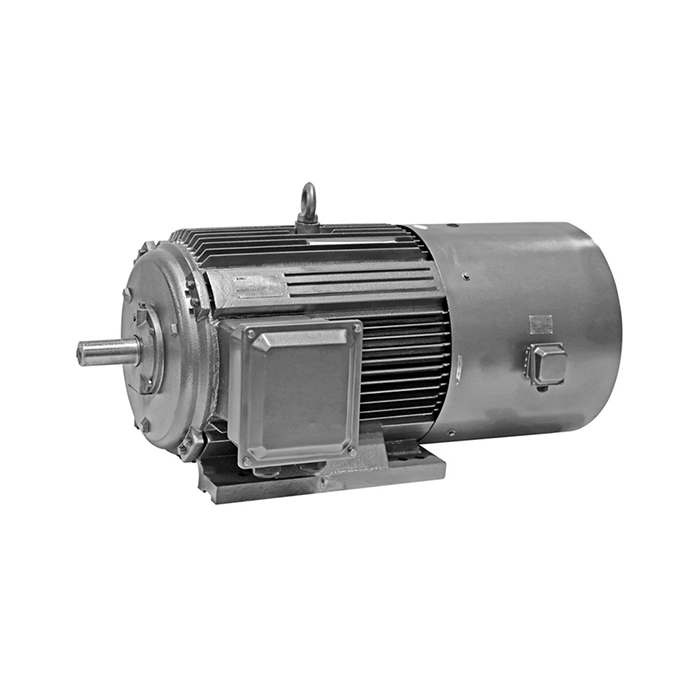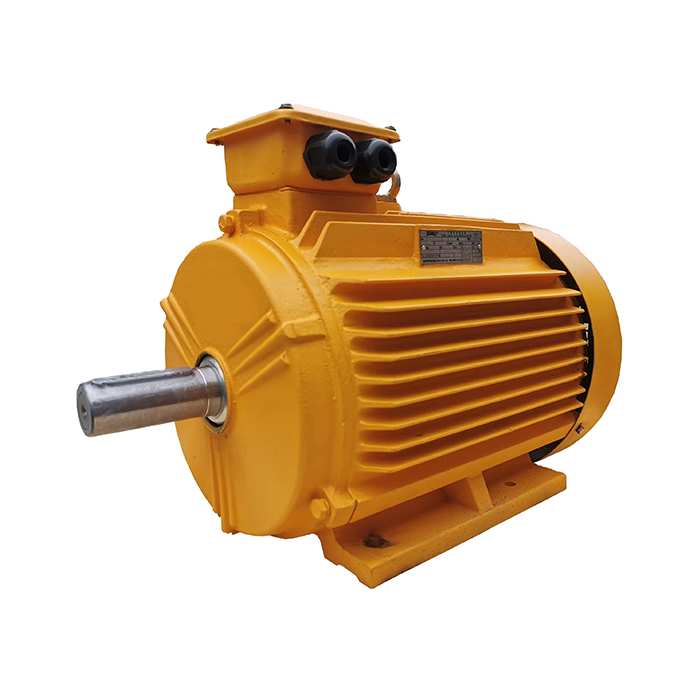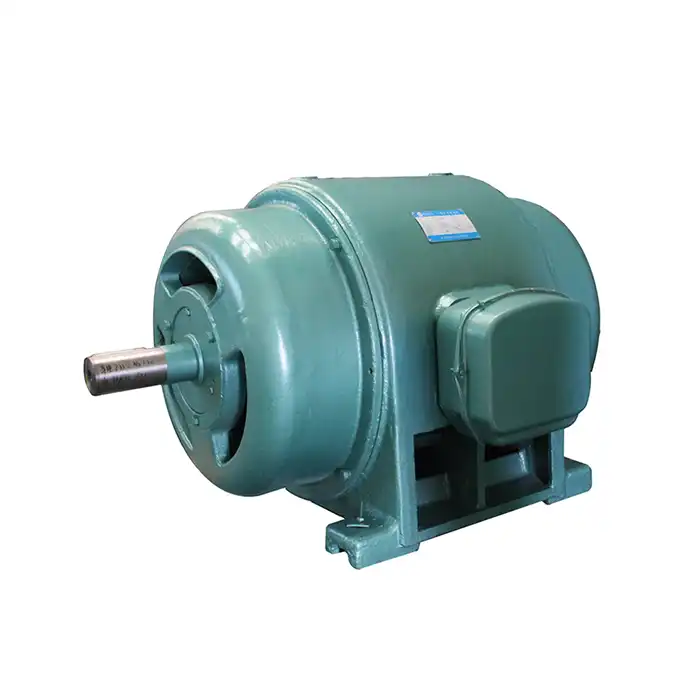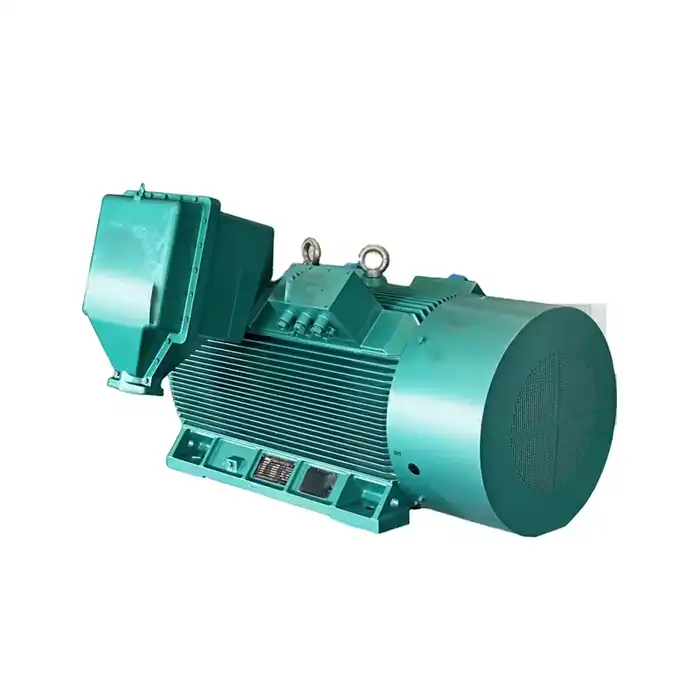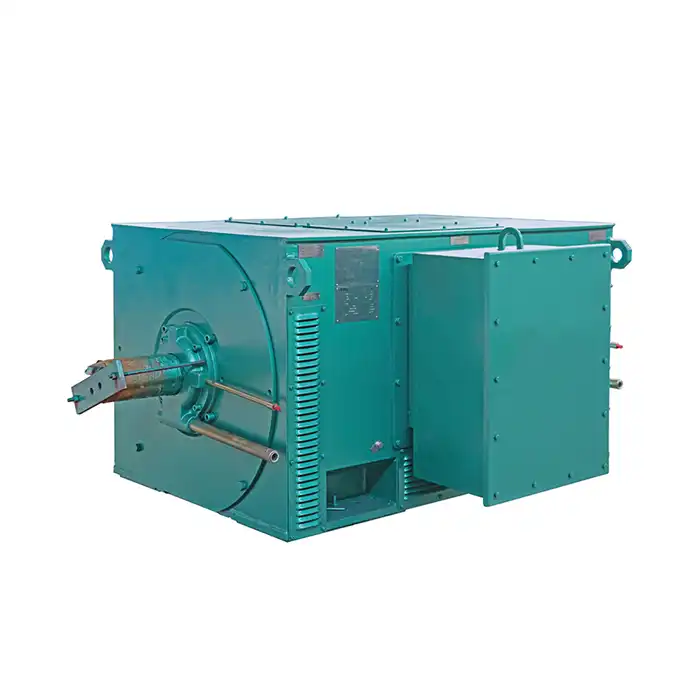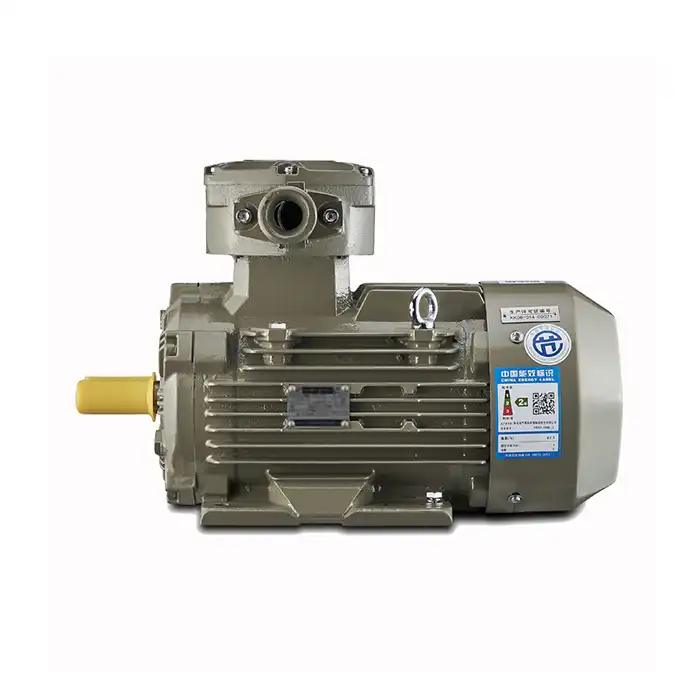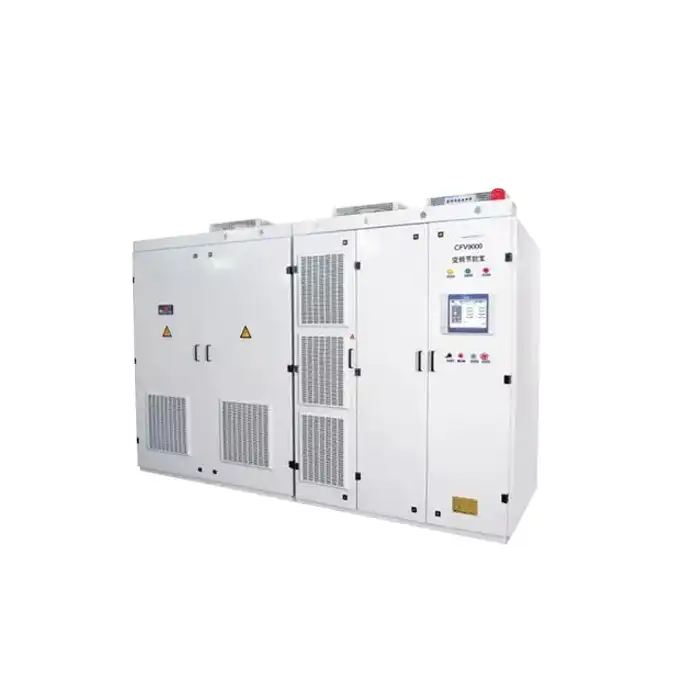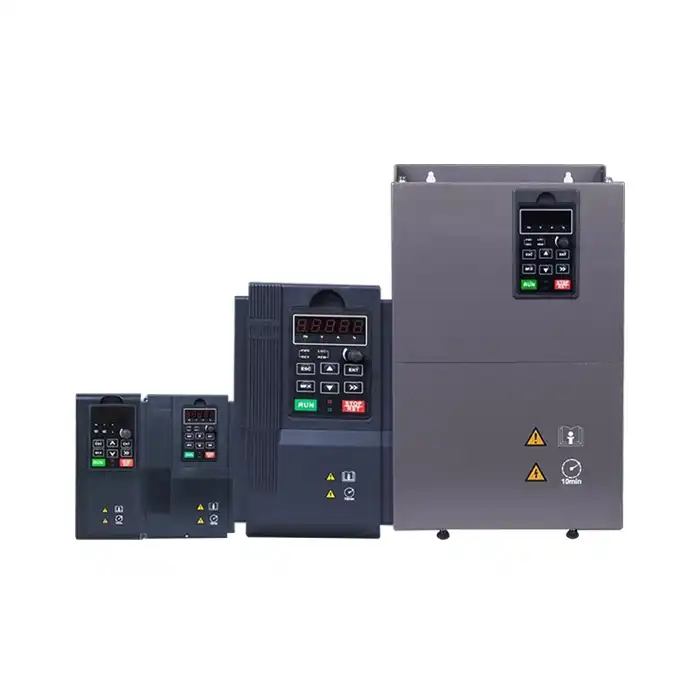In many different industrial areas, inverter duty induction motors are essential for increasing energy efficiency. In order to satisfy precise load requirements, these specifically made motors, which are specialized for variable frequency drive (VFD) applications, instantly modify their operating speed and torque. They greatly cut down on the energy waste that is often seen in fixed-speed motors by providing precise control over motor operations. Operating well throughout a broad frequency range—from as low as 5 Hz to 100 Hz—ensures reduced power consumption without compromising functionality. Inverter duty induction motors are a key component of sustainable industrial practices because of their versatility, which not only saves energy but also increases equipment lifetime by lowering mechanical and electrical stresses.
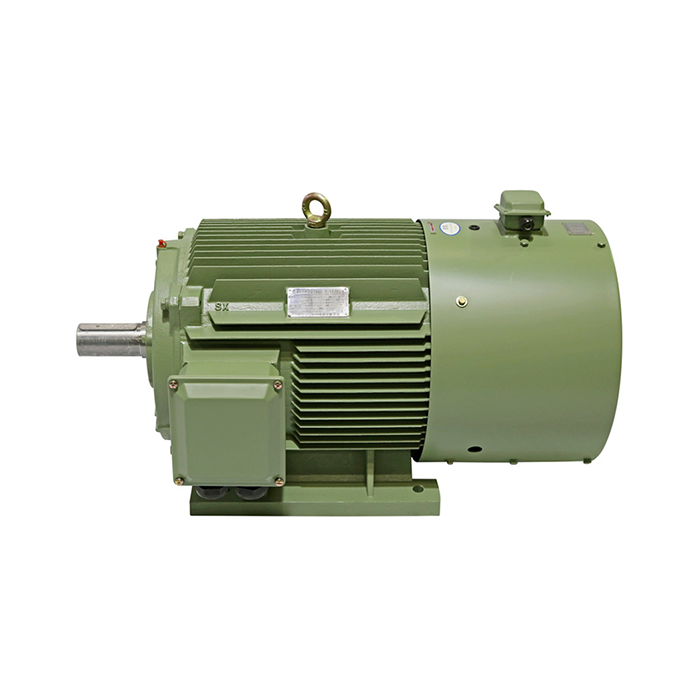
Series:YVFE3
Frequency conversion range:30hz~50hz,5hz~70hz,5hz~100hz
Power range:0.75-1000kW
Protection level:IP55
Application:are suitable for driving various mechanical equipment that require continuous and frequent forward and reverse rotation, such as steel rolling, lifting, transportation, machine tools, printing and dyeing, papermaking, chemicals, textiles, pharmaceuticals, etc., and can be used with various domestic and foreign variable frequency power supplies.
Advantage:high efficiency, wide speed range, high precision, stable operation, and easy operation and maintenance.
Certificate:installation dimensions comply with International Electrotechnical Commission (IEC) standards.
Others: SKF, NSK, FAG bearings can be replaced according to customer requirements.
Understanding Inverter Duty Induction Motors
What is an Inverter Duty Induction Motor?
An inverter duty induction motor is engineered to seamlessly integrate with variable frequency drives, allowing variable speed operation critical to modern automation and process control. Unlike standard motors, inverter duty motors are constructed to endure voltage spikes and high switching frequencies that VFDs generate. This robust design includes reinforced insulation systems and enhanced bearing protection to prevent damage from these electrical stresses. Their capacity to maintain reliable performance under varying loads and speeds distinguishes them as essential components in applications demanding precise motion control and flexibility.
How Does an Inverter Duty Induction Motor Work?
These motors function by modulating the power supply frequency through a variable frequency drive, which adjusts the motor's speed and torque output to meet demand dynamically. This nuanced control reduces unnecessary energy consumption typical of fixed-speed motors running at full speed regardless of load. By operating over a frequency conversion range typically between 5 Hz to 100 Hz, inverter duty motors can optimize energy use in real time. Real-world cases in steel rolling and HVAC systems illustrate how integrating these motors with VFDs leads to substantial electricity savings while maintaining consistent operational stability and performance.
Benefits of Inverter Duty Induction Motors
Energy Efficiency and Cost Savings
Inverter duty motors substantially improve energy efficiency by adapting to load variations, thereby consuming only the power necessary for a given task. A wide speed range—for example, between 30 Hz and 50 Hz or from 5 Hz up to 70 Hz—allows operation at minimum energy levels during low-demand periods. These motors commonly boast IE3 or IE4 efficiency classes, representing premium and super-premium efficiency standards recognized globally. The direct impact translates to:
- Significant reductions in operational energy costs through optimized power consumption.
- Lower carbon emissions as a result of decreased electricity usage.
- Reduced peak energy demand charges due to smooth acceleration and deceleration profiles minimizing current spikes.
Such savings underscore the long-term financial benefits for industries like manufacturing, water treatment, and renewable energy that employ inverter duty motors extensively.
Enhanced Performance and Durability
The superior construction of inverter duty induction motors—compliant with international IEC standards—ensures they withstand demanding operational conditions. The use of SKF, NSK, or FAG bearings, customizable upon request, reduces mechanical wear. Reinforced insulation and optimized cooling mechanisms protect against temperature and voltage stress, ensuring reliability during frequent forward and reverse rotations. These motors operate quietly with low vibration levels and feature stable torque delivery across their entire speed range. Consequently, maintenance cycles lengthen, and downtime diminishes, driving operational productivity.
Applications of Inverter Duty Induction Motors
Industrial Applications
Industries that require dynamic speed control and high operational efficiency often rely on inverter duty induction motors. Manufacturing sectors such as automotive assembly, aerospace fabrication, and food processing utilize these motors to drive pumps, compressors, conveyor belts, and machinery capable of handling continuous, cyclical load variations. HVAC and refrigeration systems in commercial and residential buildings benefit from these motors' wide frequency ranges (5 Hz to 100 Hz) to balance comfort with energy conservation. Additionally, power plants, renewable energy facilities, and water treatment plants integrate these motors to maximize operational flexibility while minimizing energy waste.
OEM and Custom Solutions
Inverter duty induction motor manufacturers often receive custom orders to meet specific equipment requirements. Customization includes adjusting power ratings spanning from 0.75 kW to 1000 kW, modifying protection levels (typically IP55 or higher), and substituting bearings to suit operational environments. Such bespoke solutions improve machine compatibility, enhance control precision, and elevate overall system performance, thereby reducing energy losses associated with improperly matched equipment.
Selecting the Right Inverter Duty Induction Motor
Key Specifications and Features
Choosing the appropriate inverter duty motor involves evaluating several technical parameters:
- Power range: Motors typically cover from 0.75 kW to 1000 kW, accommodating both small-scale and heavy-duty operations.
- Frequency range: Capabilities between 5 Hz and 100 Hz allow flexibility for diverse speed requirements.
- Voltage compatibility: Able to operate at 380V, 400V, 415V, up to 690V and custom multi-voltage configurations.
- Protection Level: IP55 standard protection guards against dust and water; higher protection options are available for harsh environments.
- Efficiency Class: IE3 or IE4 ratings guarantee premium efficiency performance standards.
Assessing these factors alongside your application's operational profile ensures optimal motor selection.
Company Introduction and Product Services
At Shaanxi Qihe Xicheng Electromechanical Equipment Co., Ltd., we provide state-of-the-art inverter duty induction motors designed for superior energy efficiency and operational stability. Our products span a power range of 0.75 kW to 355 kW, offer protection levels of IP55 with customization options, and meet IEC installation standards. By utilizing high-quality bearings from SKF, NSK, or FAG, alongside reinforced insulation and advanced cooling systems, we ensure motors can handle frequent reversals and intensive industrial demands.
Our commitment to energy-efficient power solutions is backed by seamless pre-sales guidance and robust after-sales support, including weekend availability. Customers enjoy fast, free delivery alongside a 30-day return policy. Our rigorous manufacturing process involves precision die-casting, automated coil winding, and vacuum pressure impregnation to guarantee product reliability. Our dedication to excellence translates into motors that minimize downtime, lower energy costs, and elevate production consistency.
Conclusion
Inverter duty induction motors represent a critical advancement in energy-efficient motor technology. Their capability to harmonize with variable frequency drives facilitates precise control over speed and torque, enabling significant energy savings and cost reductions. Designed for durability and operational flexibility, these motors suit a broad spectrum of industrial applications, from manufacturing to HVAC to renewable energy systems. Selecting the right motor involves careful consideration of technical specifications and trusted suppliers who deliver quality and service. Adopting inverter duty induction motors empowers industries to meet modern energy challenges while enhancing productivity.
Frequently Asked Questions
Q1: How do inverter duty induction motors improve energy efficiency?
A: These motors utilize variable frequency drives to modulate speed and torque exactly according to load requirements, minimizing wasted energy while maintaining performance over a wide frequency range of 5 Hz to 100 Hz.
Q2: What industries benefit most from inverter duty induction motors?
A: Manufacturing, HVAC, water treatment, renewable energy, and process control industries particularly benefit due to these motors' robust design and variable speed capabilities that align well with fluctuating operational demands.
Q3: How do I choose the right inverter duty induction motor for my application?
A: Key considerations include power rating, frequency range, insulation class, protection level, efficiency rating, and supplier reputation. Evaluating these ensures compatibility with your mechanical system and operational goals.
Where to Buy Inverter Duty Induction Motor
When seeking high-performance inverter duty induction motors, Shaanxi Qihe Xicheng Electromechanical Equipment Co., Ltd. (XCMOTOR) is your trusted partner. Offering a wide range of motors with power from 0.75 kW to 1000 kW, protection levels meeting IP55 and above, and compliance with IEC standards, XCMOTOR caters to intensive industrial applications. Our products excel in efficiency, reliability, and ease of maintenance. To explore our inverter duty induction motor solutions and receive professional, dedicated support, contact us at xcmotors@163.com today.
References
- Energy Efficiency Improvement and Cost Saving Opportunities for Electric Motor-Driven Systems, U.S. Department of Energy
- IEC Standard 60034-1: Rotating electrical machines - Part 1: Rating and performance
- IEEE Std 112-2004: Test Procedure for Polyphase Induction Motors and Generators
- “Variable Frequency Drives: Benefits and Energy Savings,” NEMA (National Electrical Manufacturers Association) Publication
- “Electric Motor Systems: A Guide to Energy-Efficient Motors and Drives,” International Energy Agency
- “Advanced Motor Technology in Industrial Applications,” Journal of Electrical Engineering and Automation



